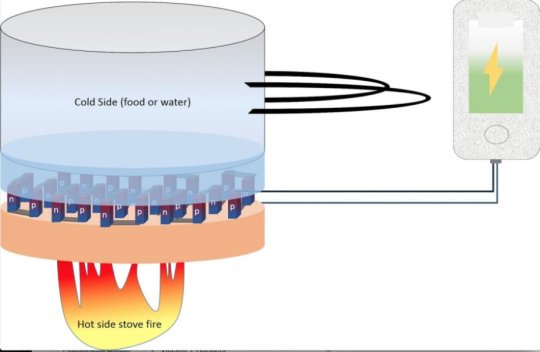The group headed by University of Utah materials science and engineering lecturer Ashutosh Tiwari, has identified that a combination of the chemical elements calcium, terbium and cobalt can prepare an effective, affordable and eco-friendly substance that can generate electricity through thermoelectric procedure involving cold and hot air.
The very first author of the paper is University of Utah engineering and materials science postdoctoral scientists, Shrikant Saini. Thermoelectric effect is a procedure where the temperature difference in a substance produced an electronic voltage. When single end of the substance is hot and the other end is cold, charge carriers from the hot corner move through the substance to the cold end, producing an electronic voltage. The substance requires less than a single – degree difference in temperature to produce a detectable voltage.

For years, the scientists have been hunting for the right sort of substance that makes the procedure more effective and produces more electricity still is non-toxic. There are other substances that can release power this way, like telluride, cadmium or mercury based substances, but those are toxic to humans. The distinguished advantage to this novel substance by team of Tiwari is that it is cost-effective to product, and most vitally, bio-friendly and eco-friendly while still being effective at generating electricity, confirms Tiwari. Hence, it could be safe to employ with humans.
“There are no toxic chemicals involved,” he says. “It is highly effective and can be employed for a lot of day-to-day applications.” The applications for this novel substance are endless. It could be built into jewelry that uses body heat to power implantable medical devices like the blood-glucose monitors. It could be employed to charge mobile equipment through cooking pans or in cars where it attracts from the heat of the engine.
Airplanes could result in additional power by using heat from within the cabin versus the cold air outside. Power plants also could employ the substance to produce more electricity from the released heat that the plant generates.
“In power plants, around 60 percent of the energy is wasted,” says the postdoctoral scientists Saini. “With this, you could reuse some of that 60 percent.” Lastly, Tiwari says that it could be employed in developing countries where electricity is scarce and the only source of energy is the fire in the stoves.
The Venture and Technology Commercialization Office of the University of Utah has filed a U.S. patent for the substance, and the group will initially develop it for use in cars and for biosensors.
Filed Under: News


Questions related to this article?
👉Ask and discuss on Electro-Tech-Online.com and EDAboard.com forums.
Tell Us What You Think!!
You must be logged in to post a comment.